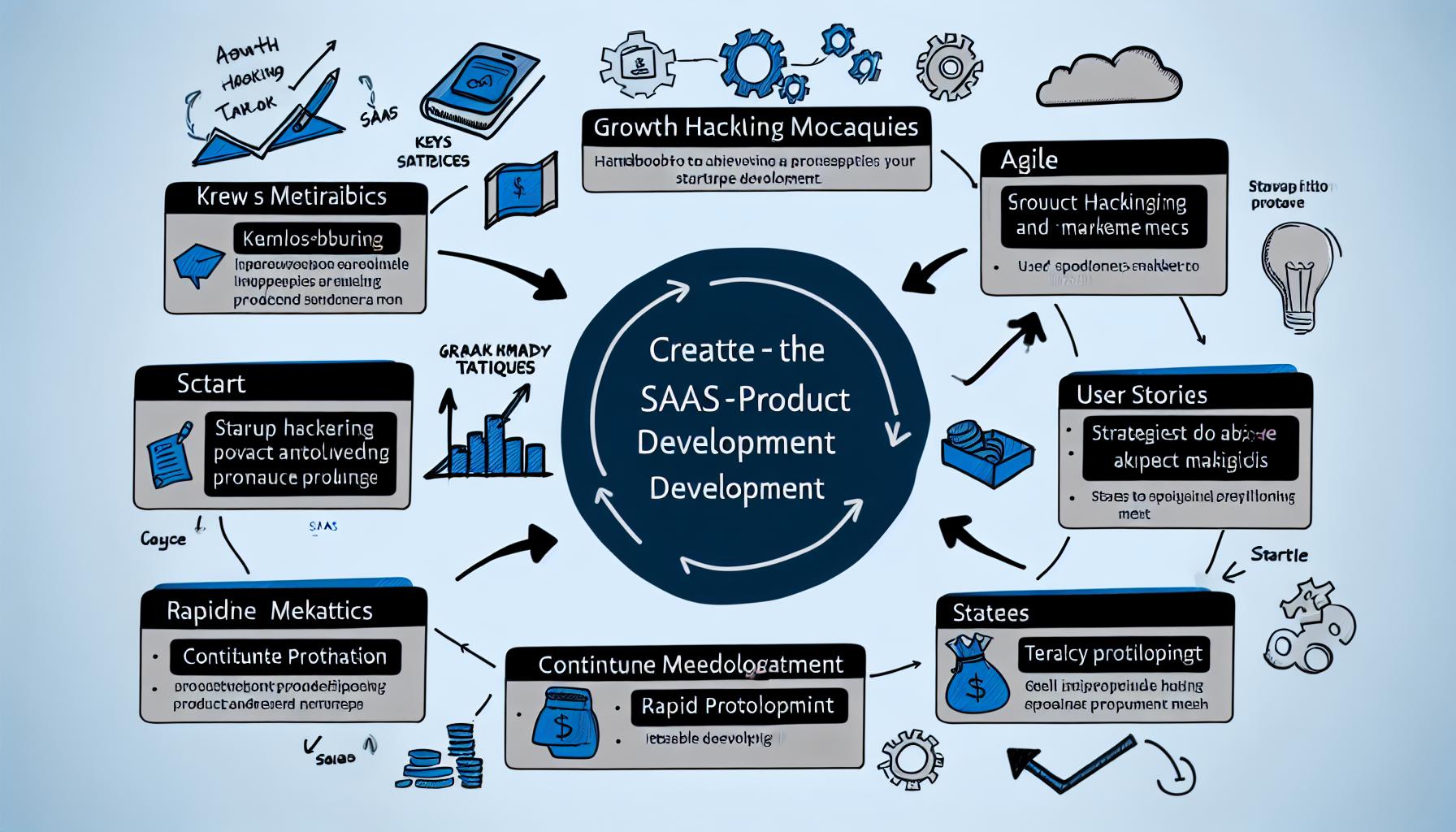Mastering SaaS Product Management: Essential Skills for Product Managers
Software as a Service (SaaS) has revolutionized the way businesses operate, and the role of product managers has become more critical than ever in...
4 min read
Brian Polackoff
:
Aug 28, 2024 1:14:00 PM

In the rapidly evolving landscape of Software as a Service (SaaS), mastering the art of product management is crucial for achieving success, particularly for B2B SaaS companies. The role of a SaaS product manager is multifaceted and requires a deep understanding of both market dynamics and customer needs. This article aims to provide an in-depth guide to product management in the SaaS domain, shedding light on key strategies, development processes, and common challenges that SaaS product managers face.
To fully grasp SaaS product management, it is essential to differentiate it from non-SaaS product management, particularly traditional software. Unlike traditional software that often relies on one-time purchases and installations, SaaS products are typically subscription-based and hosted on the cloud. This fundamental distinction necessitates a different approach to product management. SaaS product managers must focus on continuous delivery, regular updates, and maintaining high availability to ensure customer satisfaction. In contrast, non-SaaS product management may prioritize long development cycles and periodic releases.
The core responsibilities of a SaaS product manager extend beyond mere product development. They are tasked with defining the product vision, creating a product roadmap, and aligning product strategy with business objectives. Additionally, they must ensure seamless collaboration within the cross-functional product team, encompassing roles such as engineering, marketing, and customer success. Effective communication is paramount, as SaaS product managers must regularly update stakeholders on product performance and upcoming releases.
Successful SaaS product managers possess a unique blend of skills that enable them to navigate the complexities of the SaaS market. These include strong analytical abilities to interpret product analytics and monitor product usage, project management skills to oversee the development process, and the capacity to adapt to changing market dynamics. Furthermore, excellent communication skills are crucial for articulating the product vision and strategy to both the product team and external stakeholders.
Developing a robust SaaS product strategy begins with a clear product vision. This vision serves as a guiding star for the entire development process, outlining the long-term goals and aspirations for the product. Once the vision is established, a detailed product roadmap must be created, delineating the steps required to achieve this vision. This roadmap should include timelines, milestones, and resource allocation, providing a comprehensive guide to product management.
Alignment between the product strategy and the overarching business objectives is critical for achieving product success. SaaS product managers must ensure that the product development efforts contribute directly to the company's goals, whether they involve revenue growth, market expansion, or customer acquisition. This alignment requires regular communication and collaboration with executive leadership to ensure that the product strategy evolves in tandem with the company's strategic direction.
The SaaS market is characterized by rapid changes and evolving customer demands. SaaS product managers must remain agile, continuously monitoring market trends and competitor activities. Adapting to these changes may involve pivoting the product strategy, incorporating new features, or even rethinking the product vision. This dynamic approach helps product managers stay ahead of the curve and maintain a competitive edge in the market.
The SaaS product development process is typically divided into several stages, each with its own set of objectives and deliverables. These stages include ideation, where new product ideas are generated; market research, to validate the feasibility and demand for the product; development, where the product is built and tested; and deployment, where the product is launched to the market. Post-launch, continuous monitoring and improvement are essential to ensure the product remains relevant and competitive.
The product team plays a pivotal role in the SaaS product development process. This cross-functional team, led by the product manager, includes engineers, designers, marketers, and customer success representatives. Each member contributes their expertise to ensure the product meets the desired quality standards and addresses customer needs. Effective collaboration and communication within the product team are crucial for overcoming challenges and achieving successful product launches.
Continuous product improvement is a cornerstone of SaaS product management. Unlike traditional software, SaaS products require regular updates and enhancements to stay competitive and meet evolving customer expectations. SaaS product managers must implement robust mechanisms for gathering user feedback, conducting product analytics, and monitoring product usage. This data-driven approach enables them to make informed decisions and prioritize features that will have the most significant impact on product performance and customer satisfaction.
Measuring product adoption and user engagement is vital for assessing the success of a SaaS product. Key metrics such as daily active users (DAUs), monthly active users (MAUs), and churn rate provide insights into how customers are interacting with the product. SaaS product managers must regularly monitor these metrics to identify trends and areas for improvement. High levels of user engagement and low churn rates are indicative of a successful product that meets customer needs and delivers value.
User feedback is an invaluable resource for informing product development. SaaS product managers must establish channels for collecting feedback, such as surveys, customer interviews, and support tickets. This feedback helps identify pain points, uncover unmet needs, and generate ideas for new features. By incorporating user feedback into the development process, product managers can ensure that the product evolves in a way that aligns with customer expectations and enhances overall user satisfaction.
Driving product adoption in the B2B SaaS space requires a strategic approach. SaaS product managers must leverage various tactics, such as offering free trials, providing comprehensive onboarding and training, and developing strong customer success programs. Additionally, effective marketing and communication efforts are essential to highlight the product's value proposition and encourage potential customers to use the product. By implementing these strategies, product managers can boost adoption rates and ensure long-term product success.
One of the most significant challenges in SaaS product management is balancing customer needs with business goals. While it is essential to address customer pain points and deliver a product that meets their expectations, product managers must also ensure that these efforts align with the company's strategic objectives. Striking this balance requires careful prioritization and decision-making, as well as effective communication with stakeholders to manage expectations and drive alignment.
The SaaS market is highly competitive, with numerous players vying for market share. SaaS product managers must stay abreast of competitor activities and market trends to identify opportunities and threats. This involves conducting regular competitive analysis, benchmarking product performance against rivals, and adapting the product strategy as needed. Navigating the competitive landscape requires a proactive approach and a willingness to innovate to maintain a competitive edge.
SaaS product managers often face technical and operational hurdles that can impede product development and performance. These challenges may include scalability issues, integration complexities, and infrastructure limitations. Overcoming these hurdles requires close collaboration with the engineering team, effective project management, and a focus on continuous improvement. By addressing technical and operational challenges proactively, product managers can ensure the product remains robust, reliable, and capable of delivering a seamless user experience.

Software as a Service (SaaS) has revolutionized the way businesses operate, and the role of product managers has become more critical than ever in...

In the fiercely competitive landscape of Software as a Service (SaaS), the foundation of a successful product lies in the strength of its product...

In today's fast-paced tech landscape, building and launching a successful Software as a Service (SaaS) product is essential for startup founders and...